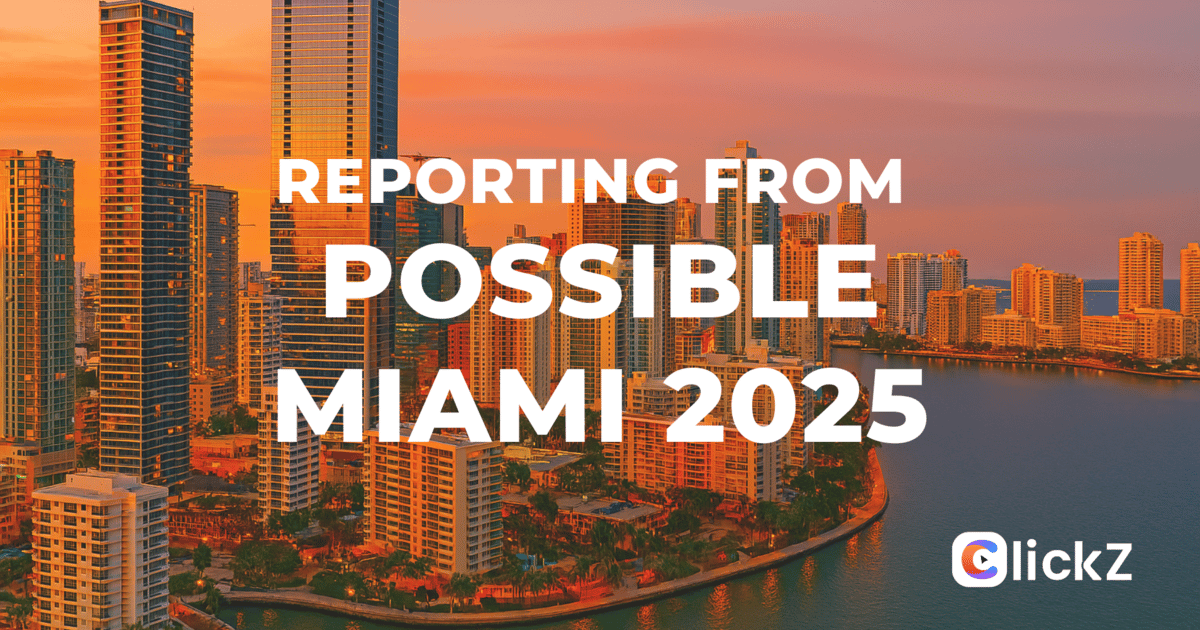For many marketers, Google remains the automatic answer when it comes to performance marketing. But at POSSIBLE 2025, Jeff Alderman of AdMedia and Mitch Cross of Macy’s challenged that reflex showing how brands can reduce overreliance on Google, optimize for ROI across channels, and rethink what relevance really looks like.
The session, “Possibilities Beyond Google,” was part cautionary tale and part strategy workshop. The message: Google isn’t going away, but marketers can no longer afford to treat it as their only growth lever.

The Shift: From Search Engine to Search Ecosystem
The presenters began by walking through how search behavior and spend has evolved over the past two decades. While Google still dominates paid search, consumer behavior is increasingly distributed across retail media networks, social platforms, and brand-owned properties.
Today’s consumer doesn’t just “Google it.” They start product searches on Amazon, TikTok, or a retailer’s app. Cross noted that Macy’s, for example, sees a growing share of in-store behavior augmented by app-based search and research. Their stores have become experience centers, places to try, compare, and explore with the actual transaction happening later, often online.
For marketers, that shift demands a broader definition of search: it’s no longer just about the legacy keyword box, but about signals across screens, platforms, and moments of discovery.
Why Brands Stay Stuck and What Needs to Change
One of the most pressing challenges highlighted was organizational inertia. Even when channel diversification makes sense, brands often struggle to justify shifting budget away from Google.
Cross pointed to the influence of Google’s own sales playbook, which focuses heavily on impression share and pitches that imply “headroom” for more investment. What’s often missing, he said, is honest evaluation of diminishing returns especially on trademark terms where CPCs continue to rise.
The tension, according to both speakers, is less about capability and more about internal education. Agencies may advocate for testing new platforms, but brand-side marketers often face resistance from leadership that’s conditioned to believe Google is the safest bet.
Retail media emerged as one of the most viable growth alternatives. Macy’s has invested heavily in its own retail media network and sees strong performance from on-site search placements and sponsored listings. The advantage: shoppers are closer to purchase intent, and the platform’s search function effectively doubles as a low-funnel conversion engine.
Retailers are increasingly becoming their own ad ecosystems with search, audience data, and closed-loop measurement all built in. The key for advertisers is understanding that search doesn’t just mean Google or Bing. It includes any environment where intent is expressed and can be acted on.
What Diversification Really Looks Like

The call wasn’t to abandon Google far from it. Instead, the focus was on building a more balanced, resilient mix.
This includes:
Investing in contextual targeting, where ads are placed based on content and environment relevance, not just user data
Exploring retail media for bottom-of-funnel efficiency
Layering in first-party and second-party data partnerships to enrich targeting
Understanding performance through incrementality, not just last-touch attribution
Alderman noted that many brands are now doubling down on these tactics not just for ROI, but to gain more control over their media and measurement stack.
Relevance, Recency, and the ROI Mandate
The session closed on a recurring theme from POSSIBLE 2025: marketers are under pressure to prove impact. That requires better targeting, better timing, and smarter spending.
As Cross put it, the goal isn’t just to spend more, it’s to make each dollar go further. That means identifying platforms where ROI is strongest, audiences are more qualified, and CPCs aren’t spiraling upward with every quarter.
Ultimately, unlocking growth beyond Google isn’t about walking away from what works. It’s about recognizing when it stops working as well as it could and having the strategic flexibility to act on that insight.
📲 Like what you’re seeing?
💬 Want to swap ideas or talk strategy while you're here?
Book a quick meeting with the ClickZ team — we'd love to hear what you're working on.
Heads up! To ensure you continue receiving our newsletters, please add [email protected] to your contact list!
Independently Created. Not affiliated with POSSIBLE.

ClickZ is a ClickZ Media publication in the Events division



